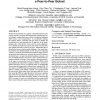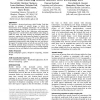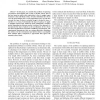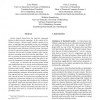208 search results - page 38 / 42 » Distributed Coverage with Multi-robot System |
CCS
2009
ACM
14 years 8 months ago
2009
ACM
Modern advanced botnets may employ a decentralized peer-to-peer overlay network to bootstrap and maintain their command and control channels, making them more resilient to traditi...
CHI
2006
ACM
14 years 8 months ago
2006
ACM
We introduce a location?based game called Feeding Yoshi that provides an example of seamful design, in which key characteristics of its underlying technologies--the coverage and s...
ICRA
2006
IEEE
14 years 1 months ago
2006
IEEE
— In this paper, we consider the problem of exploring an unknown environment with a team of mobile robots. One of the key issues in multi-robot exploration is how to assign targe...
ISCA
2009
IEEE
14 years 2 months ago
2009
IEEE
While Moore’s Law predicts the ability of semi-conductor industry to engineer smaller and more efficient transistors and circuits, there are serious issues not contemplated in t...
SRDS
2006
IEEE
14 years 1 months ago
2006
IEEE
Failure models characterise the expected component failures in fault-tolerant computing. In the context of distributed systems, a failure model usually consists of two parts: a fu...




